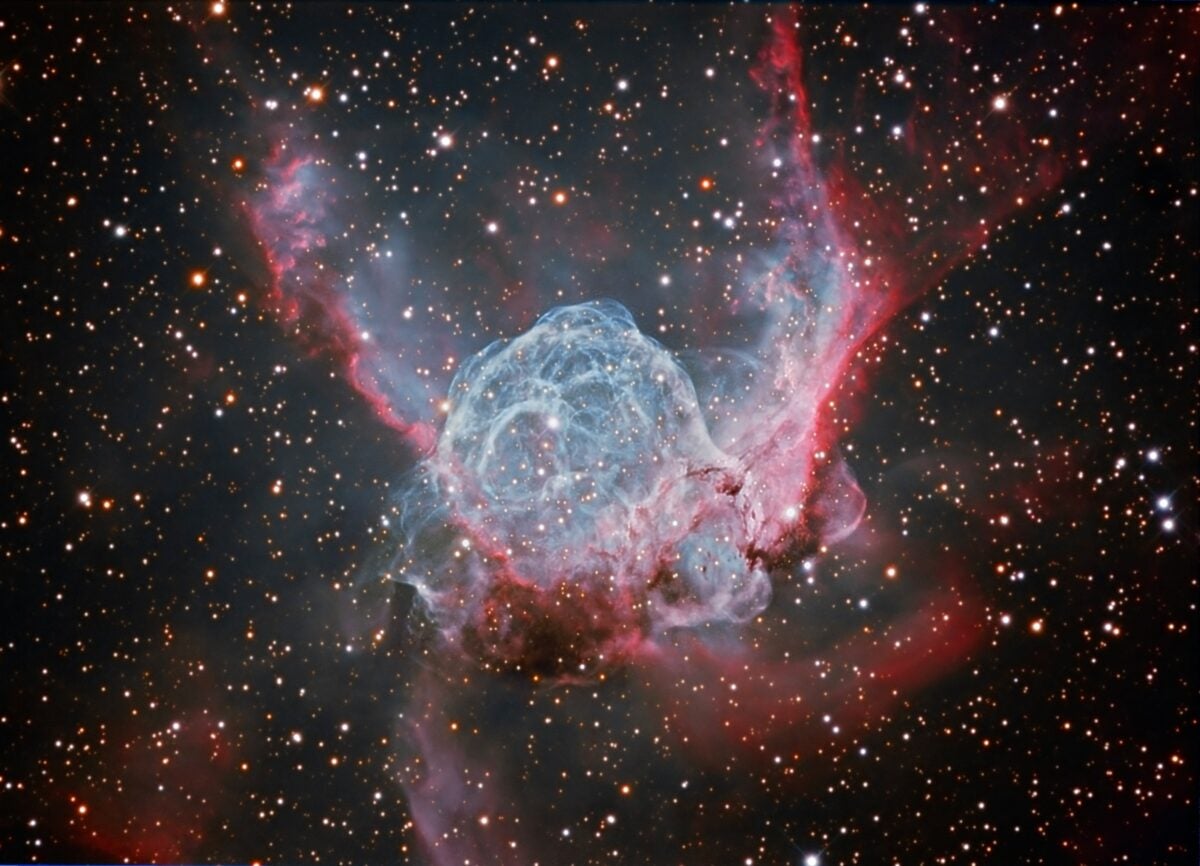
Welcome to the Astronomy.com roundtable, where our editors help explain (and sometimes debate) hot topics. This week, however, we’re asking a question that’s more a matter of opinion.
Astronomy.com: Here’s a wide-open question for the group: What are your picks for the four most beautiful images in astronomy?
Michael E. Bakich, Associate Editor: My four objects don’t come from Hubble or even the cadre of great astroimagers who contribute to the magazine. These objects are embedded in my memory because I’ve actually viewed them through telescopes. So, in no particular order (except that I’ll save the best for last):
1. Omega Centauri (NGC 5139)
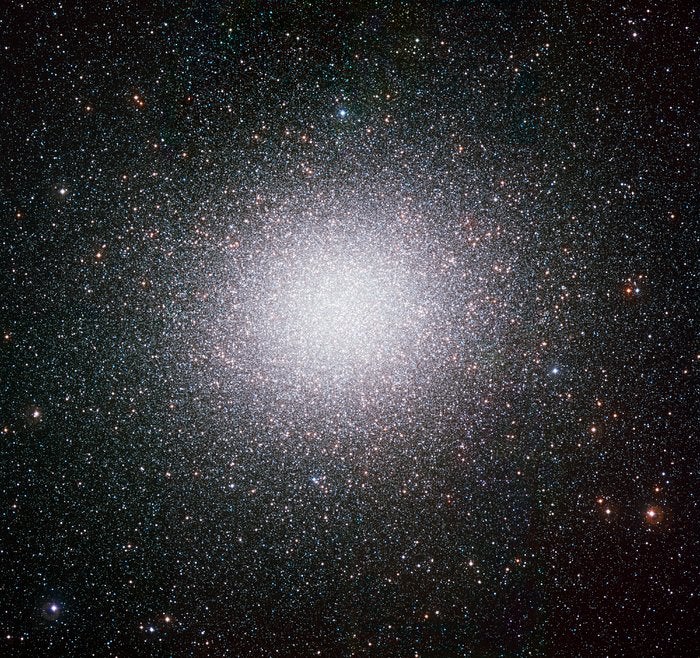
At an early Texas Star Party, I was with a small group of friends using an 18-inch StarMaster reflecting telescope on a steady, moonless night. The owner had inserted an 11mm eyepiece and pointed the scope at the spectacular globular cluster Omega Centauri (NGC 5139). At that magnification, we were able to discern individual red supergiants within the cluster. Not only did this demonstrate that sky conditions were ideal, it also proved the superb optical quality of the telescope. Amazing!
2. The solar eclipse of July 11, 2010
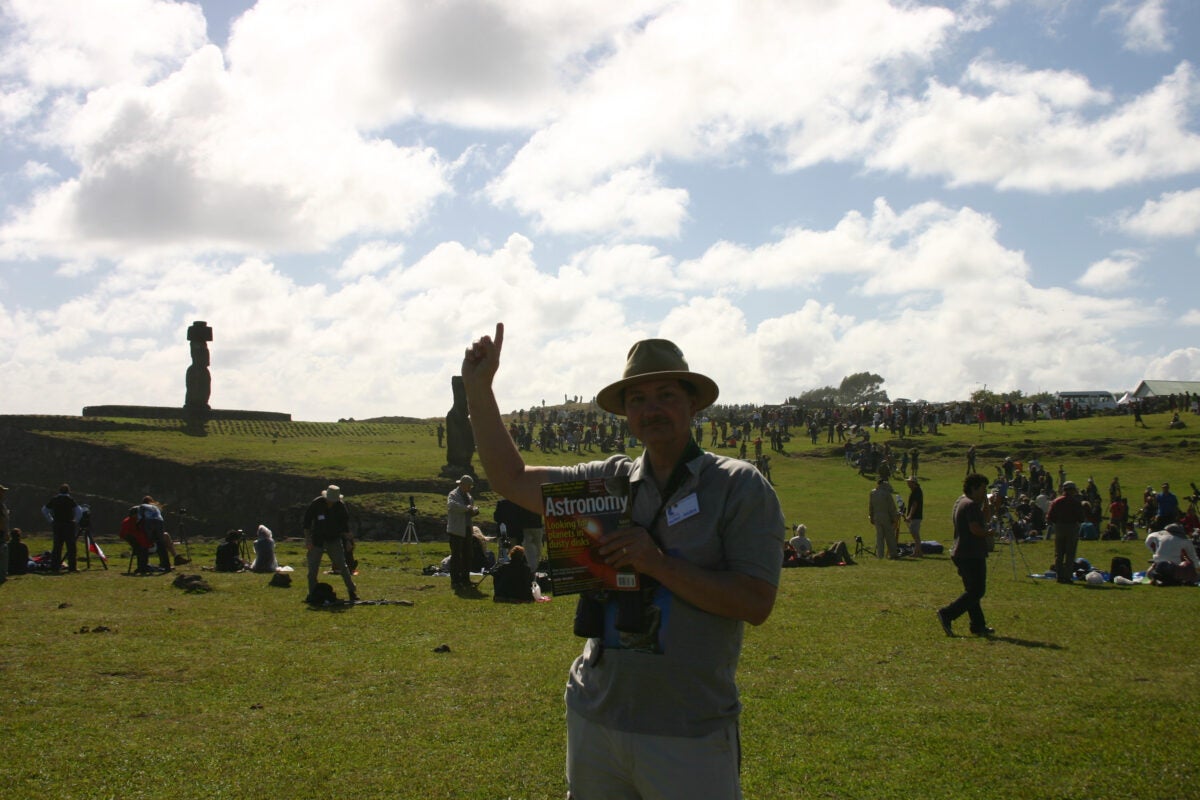
I could list many more deep-sky objects here, but for this entry I choose the Sun. But not just on any day. This observation dates back to July 11, 2010. As I’d done a number of times before, I was the astronomer for a group traveling to Chile and then to Easter Island to view a total solar eclipse. We arrived several days early, and each was peppered by lots of clouds and intermittent rain. But the meteorologist on our trip assured us that during the time of the eclipse, it would be clear. And, wow, was he right! The clouds parted just before first contact and didn’t reappear until late into the night. During totality, which lasted 4 minutes 38 seconds, the beautiful solar corona stood 40° high. That would have been enough to satisfy me (or anyone, really). But what made the view extra special was the lineup on the ground beneath the Sun of five of the Moai, the stone statues that Easter Island is famous for. Ya, that was one of my life’s Kodak moments.
3. “Thor’s Helmet” (NGC 2359)
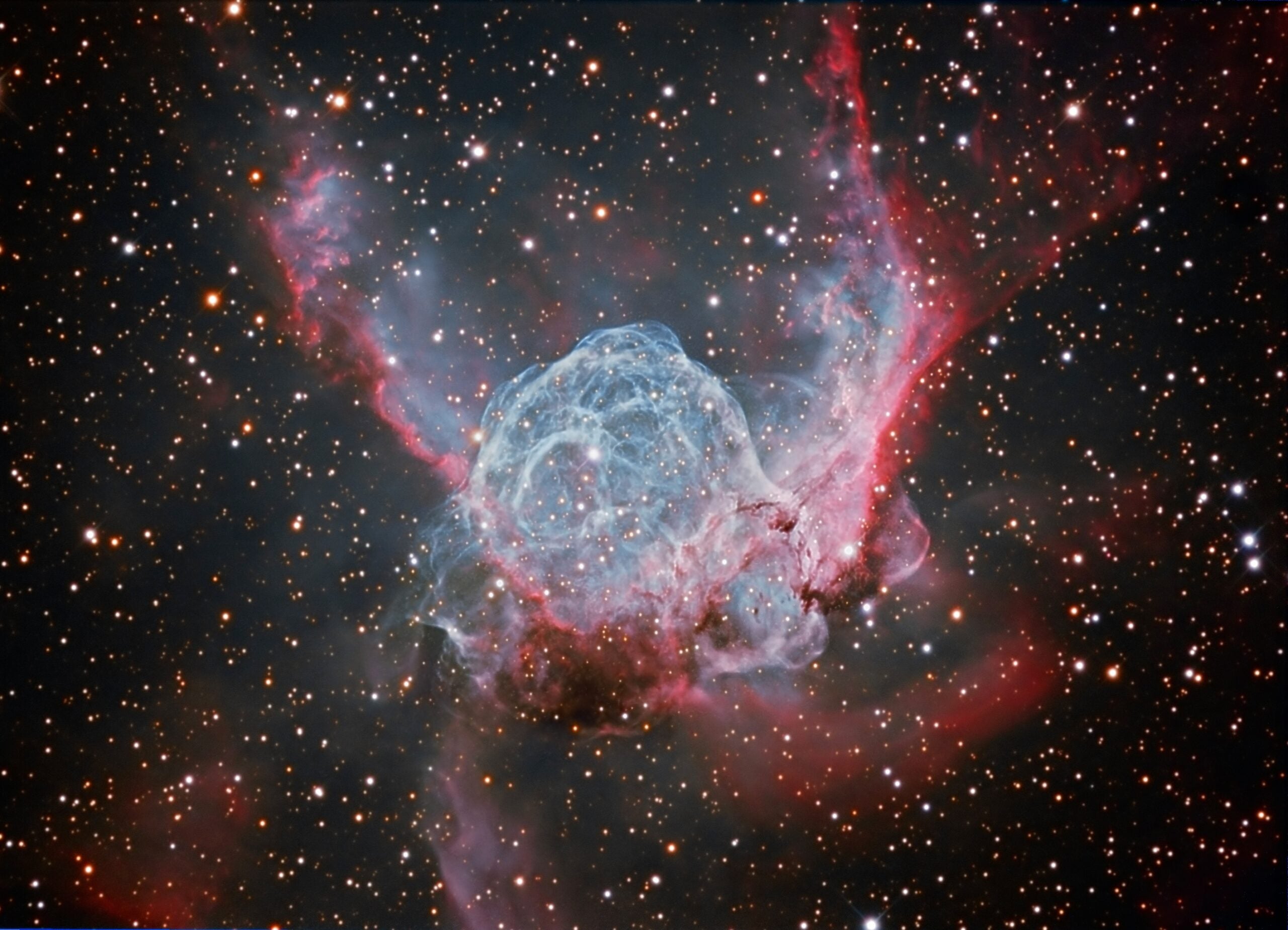
Just this past winter, I was visiting the dark-sky site of the Tucson Amateur Astronomy Association, the wonderful club based in my new home town. An amateur astronomer from Indiana had brought his home-built 41-inch reflector (yes, you read that right) and set it up for a week of observing under a sky darker than any he could find in his home state. Throughout my astronomical career, I have made it a point to gravitate toward the largest scope on the observing field. So we chatted, and he allowed me views of objects on his “to see” list. Then he asked me what I’d like to see. “Thor’s Helmet,” I replied. This object, also known as NGC 2359, is an emission nebula energized by a Wolf-Rayet star at its center. He located it and I climbed the tall, rather precarious ladder that led to the focuser. Good thing I was holding on tight when I looked through the eyepiece because what I saw stunned me. The nebulous whorls, wispy tendrils of gas, and an ever-so-slight hint of color appeared to me like many of the high-quality images of this object that I’d seen through the years. After spending serious time observing Thor’s Helmet, I made a wish: I hope he returns to Tucson next winter!
4. ‘The Jewel Box’ (Kappa Crucis Star Cluster and NGC 4755)
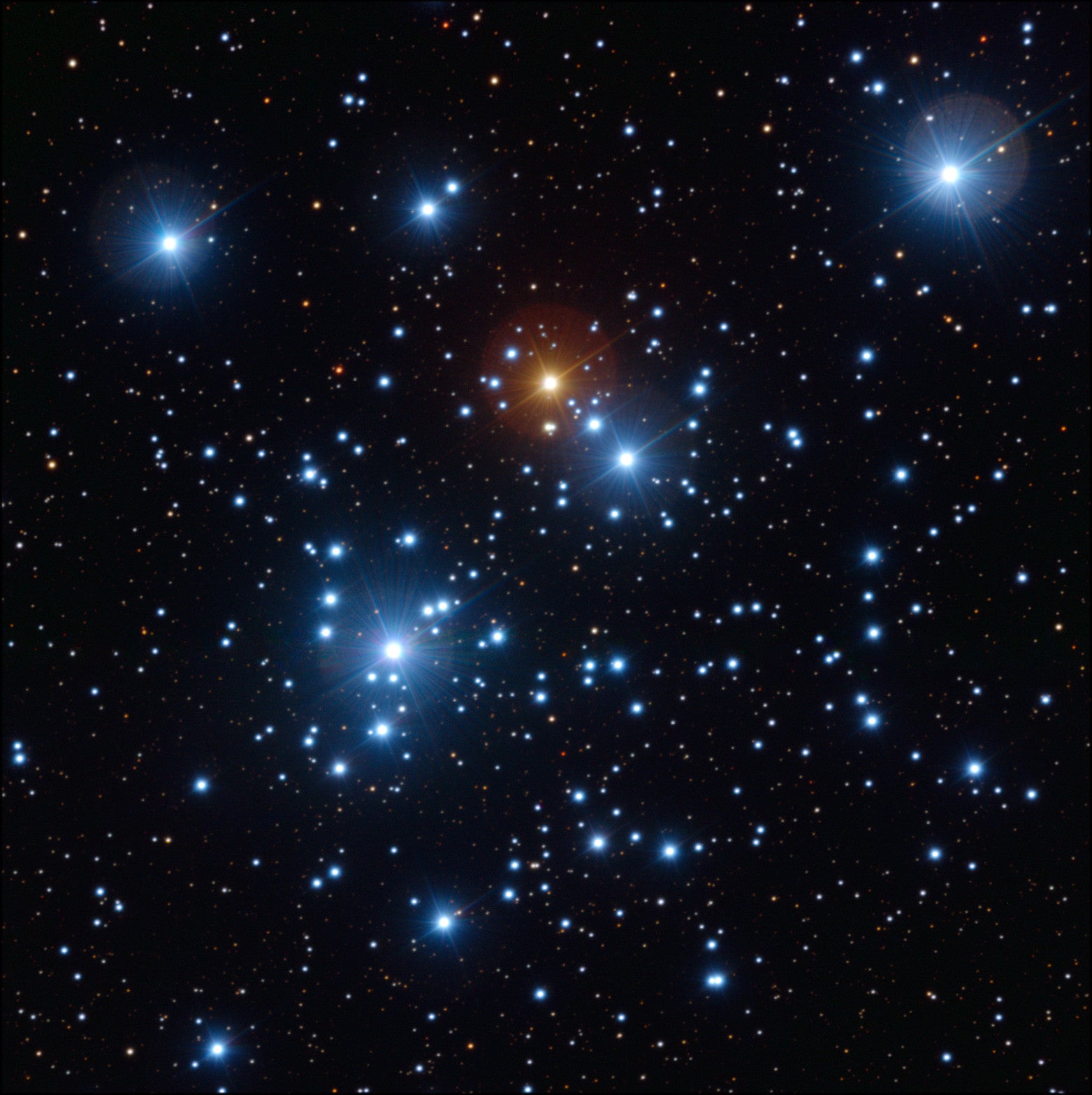
The finest view of any celestial object I’ve had came a few nights after the June 8, 2004, transit of Venus. I was the astronomer for a group of some 40 people who traveled to South Africa to view the event. We stayed at a game preserve at an altitude of about 5,000 feet (1,524 meters). Once the Sun had set, no artificial light could be seen in any direction. The tour operator had brought a number of scopes, but on one of the nights, I found myself at the eyepiece of a 6.9-inch Astro-Physics StarFire refractor looking at the open cluster appropriately called the Jewel Box. Also known as the Kappa Crucis Star Cluster and NGC 4755, this object looks great through any telescope. But on this night, from this location, through this scope, the view was jaw-dropping. I had never before or since seen such a variety of star colors in a single view. That was 20 years ago, and I still remember how I, a crusty old observer who had “seen it all” (or so I thought), was moved by the sight.
1. Edwin Hubble’s image that unlocked the nature of galaxies and the distance scale of the cosmos
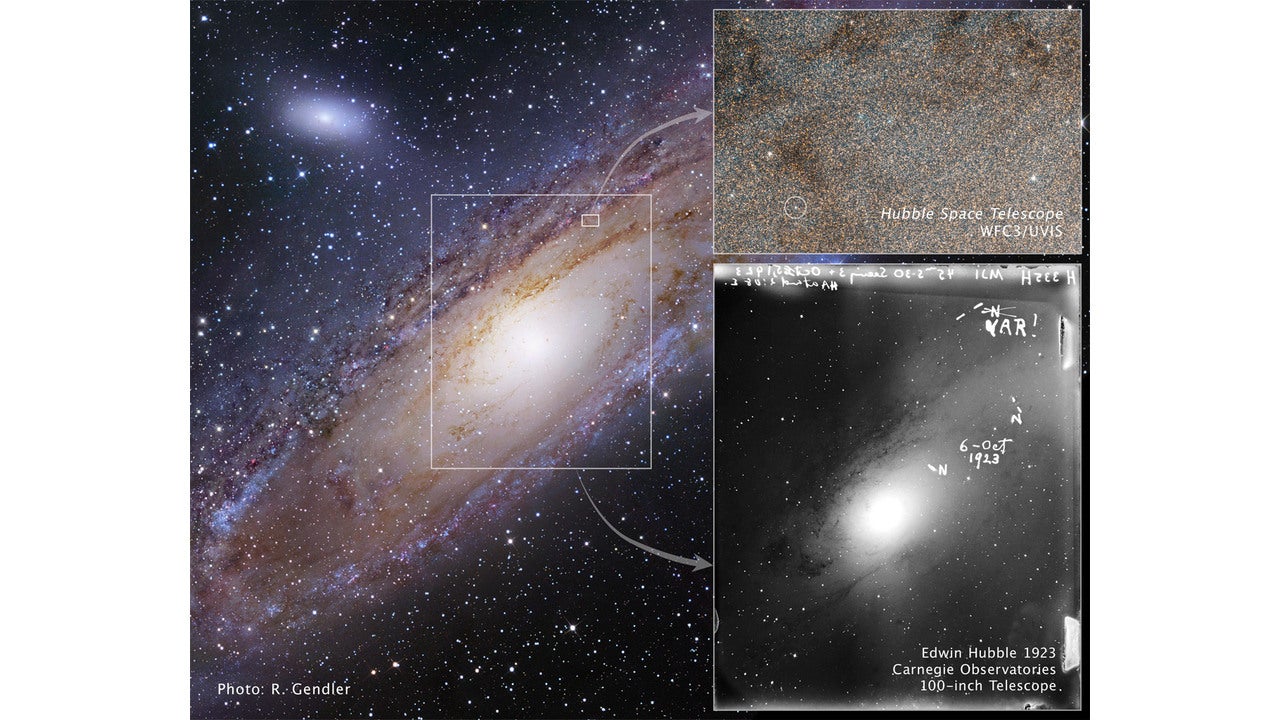
On October 5-6, 1923, Hubble, deeply interested in what were then termed “spiral nebulae,” recorded a plate of the Andromeda Nebula. Analyzing the plate soon thereafter, he excitedly recorded what he believed was a nova, an exploding star, marking the glass plate with an “N.” He then checked earlier plates and just about fell out of his chair. He realized that the star was actually a variable star, a particular type called a Cepheid (named for the prototype, Delta Cephei), and that it could be used to gauge the distance to the nebula it belonged to. The incredible faintness of the star meant that the nebula was 1 million light-years away, three times the size of the entire universe as calculated by astronomers at the time. (We now know the distance is 2.5 million light-years.) In one observation with follow-up research, Hubble discovered that Andromeda was a separate island universe, a galaxy, at a remote distance, and that galaxies are spread over huge distances across an almost unimaginably vast cosmos.
2. The Pale Blue Dot revisited
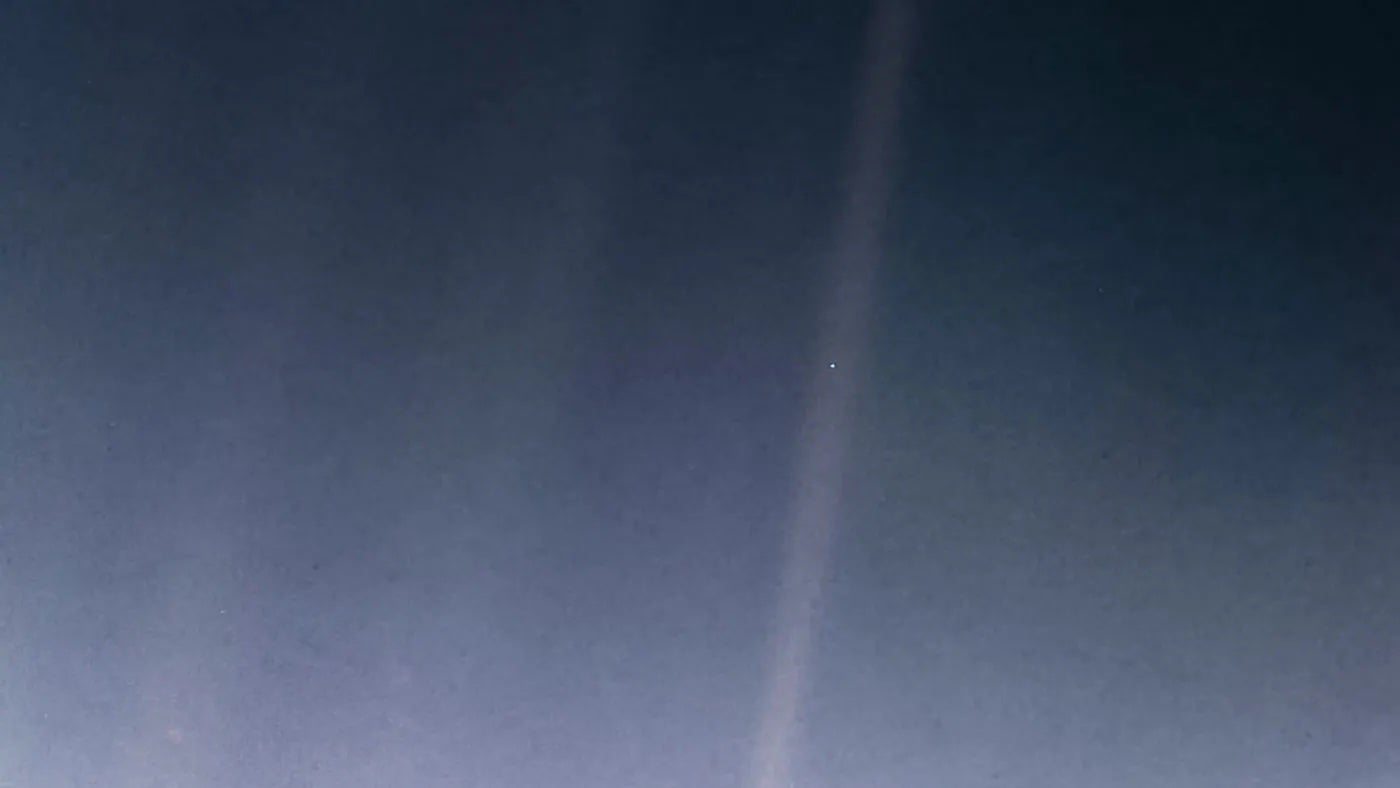
Something that almost everyone — devoted astronomy enthusiasts included — vastly underestimates is the enormity of the distance scale of the cosmos. If the Sun were a centimeter across and placed in London, the nearest star, similarly sized, would be in Paris. Most everything inside a galaxy is represented by empty space. In early 1990 planetary scientists trained the camera of the Voyager 1 spacecraft toward Earth and snapped a “Pale Blue Dot” image of a tiny speck of light that is all we intimately know — the whole of Earth and all its history, floating in the vastness of space. The image inspired Carl Sagan’s classic book Pale Blue Dot. In 2020 JPL scientists reprocessed the data and issued “Pale Blue Dot Revisited,” shown here.
3. Saturn shot by Cassini
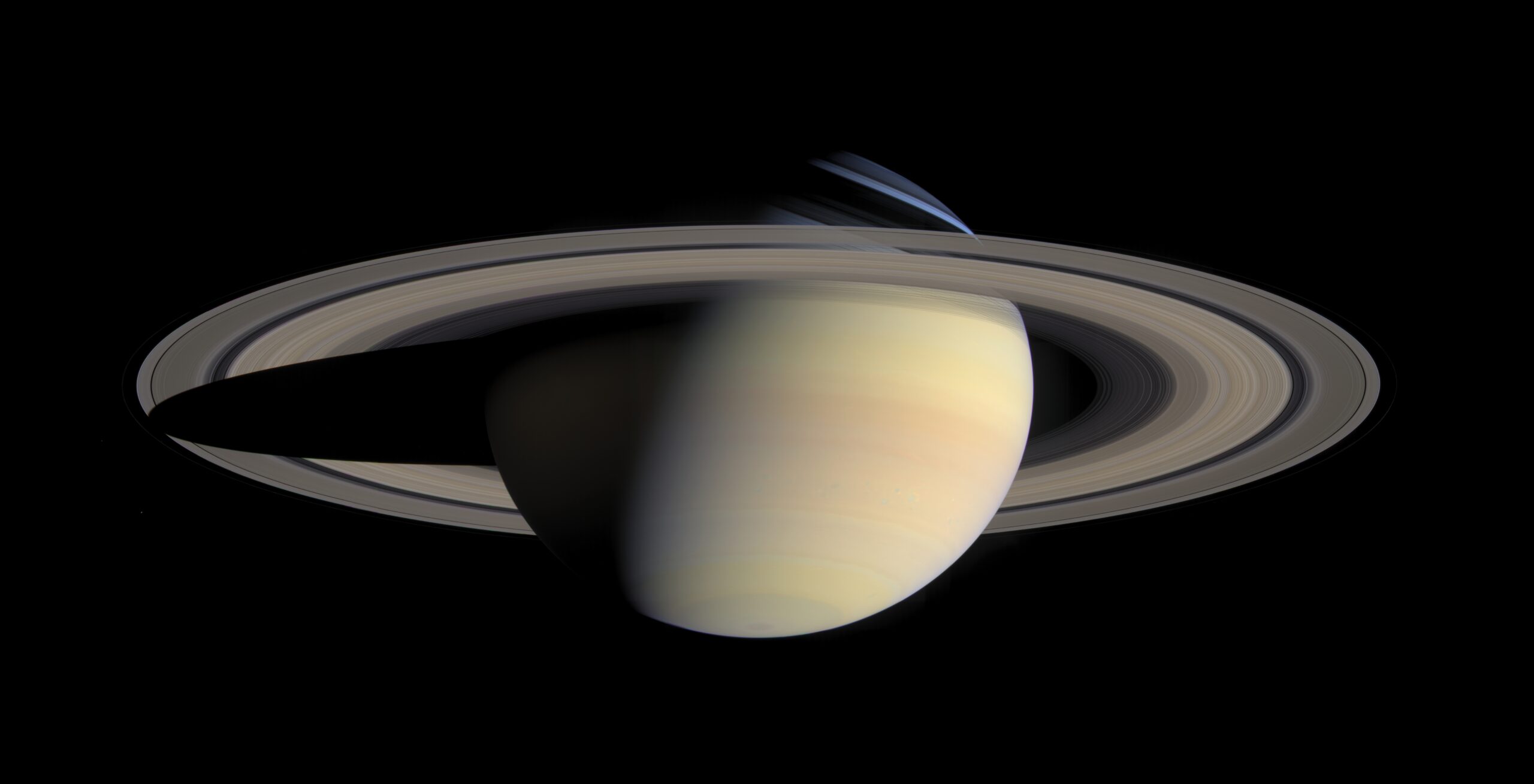
My first view through a telescope, long ago in the mid-1970s, revealed a breathtaking view of the planet Saturn. I could hardly believe that you could walk outside from a dinner party, sidle up to a small telescope, and see a magnificent view of a golden orange globe of the Ringed Planet, surrounded by its sharply defined system of rings. I was instantaneously mesmerized, and it set me on a course of observing the sky whenever I could. In 2004 the Cassini spacecraft, orbiting Saturn, captured one of the greatest portraits ever made of this most picturesque planet in our solar system. In the minds of perhaps a majority of astronomy enthusiasts, Saturn is the most iconic, symbolic image of any single object in the universe.
4. Hubble’s Orion Nebula
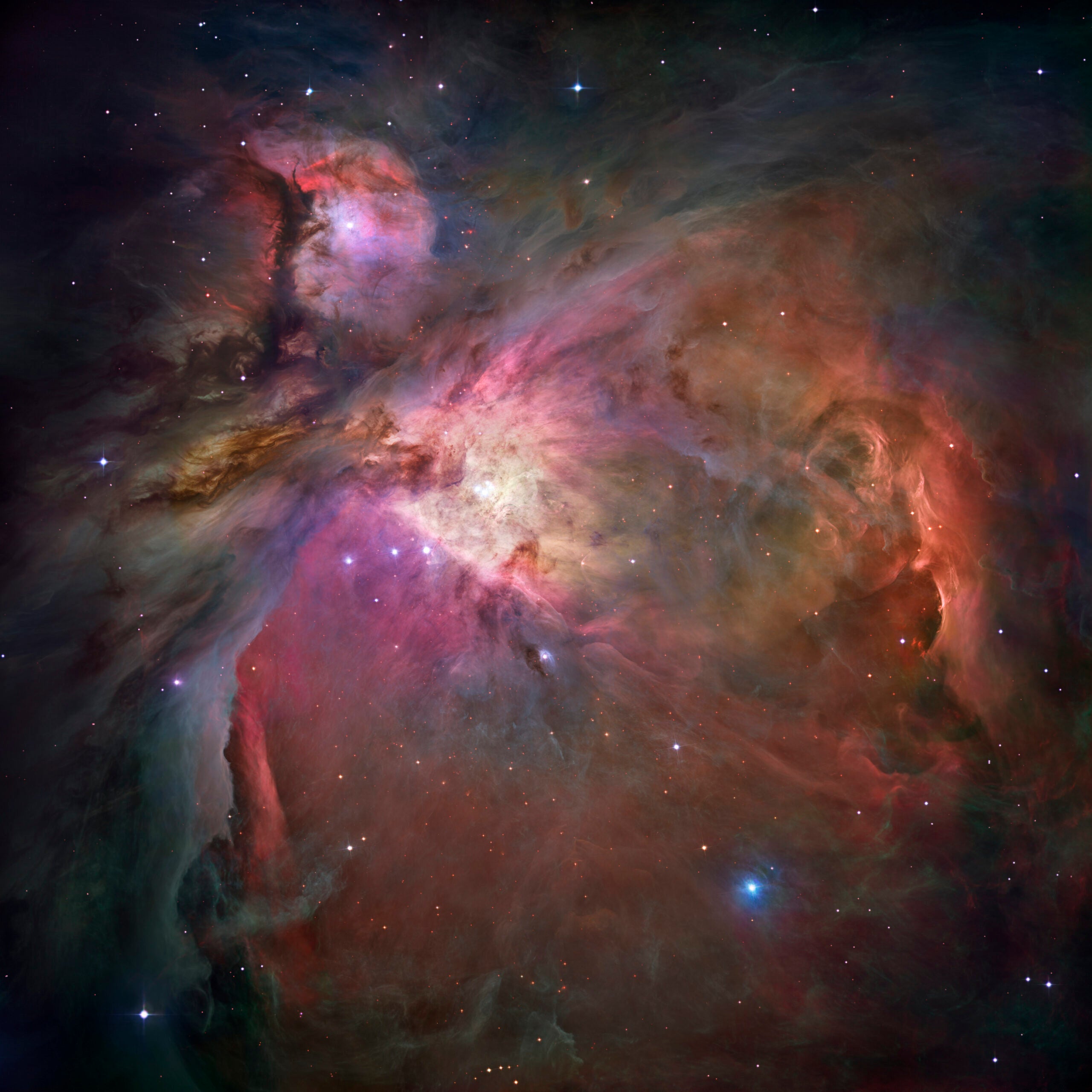
Named for the discoverer of the nature of galaxies, the long-lived space telescope has created a vast storehouse of memorable images. And now the Webb telescope has begun a long life of image production. One of Hubble’s most striking pictures is a favorite of mine, showing the Orion Nebula in its full glory. This cosmic scene stretches across perhaps 25 light-years side-to-side, and demonstrates what the universe does — engages in a vast cosmic recycling program. We see hydrogen gas that is fluorescing, like a bulb, and slowly transforming into a new generation of infant stars. It is what the universe does, and we now know that we ourselves are composed of atoms that were created in the early days of the universe or, mostly, in the deaths of lightweight and massive stars.
Related: Inside the Orion Nebula
Alison Klesman, Senior Editor:
1. M87*: The first picture of a black hole
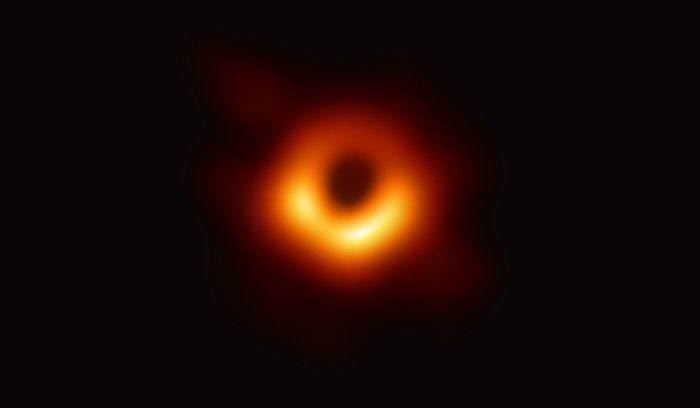
The Event Horizon Telescope’s image of the supermassive black hole at the center of elliptical galaxy M87 is groundbreaking for a number of reasons. First is the obvious — it’s a first! Although astronomers confirmed the existence of black holes decades ago and we know we can receive light from them in many wavelengths, one had never been explicitly imaged (or as close as this got, which is as close as we’ll ever get) before this. Second, the technique used — linking observatories literally across the globe to create a virtual telescope as large as Earth — was pretty novel. Long-baseline interferometry was not new, but doing it on such a large scale certainly was. Third and fourth, creating the final image required the development of novel complex processing techniques; once completed, the image and subsequent versions have all proved that thus far, what we know about how relativity and black holes work is correct.
2. New Horizons’ view of Pluto
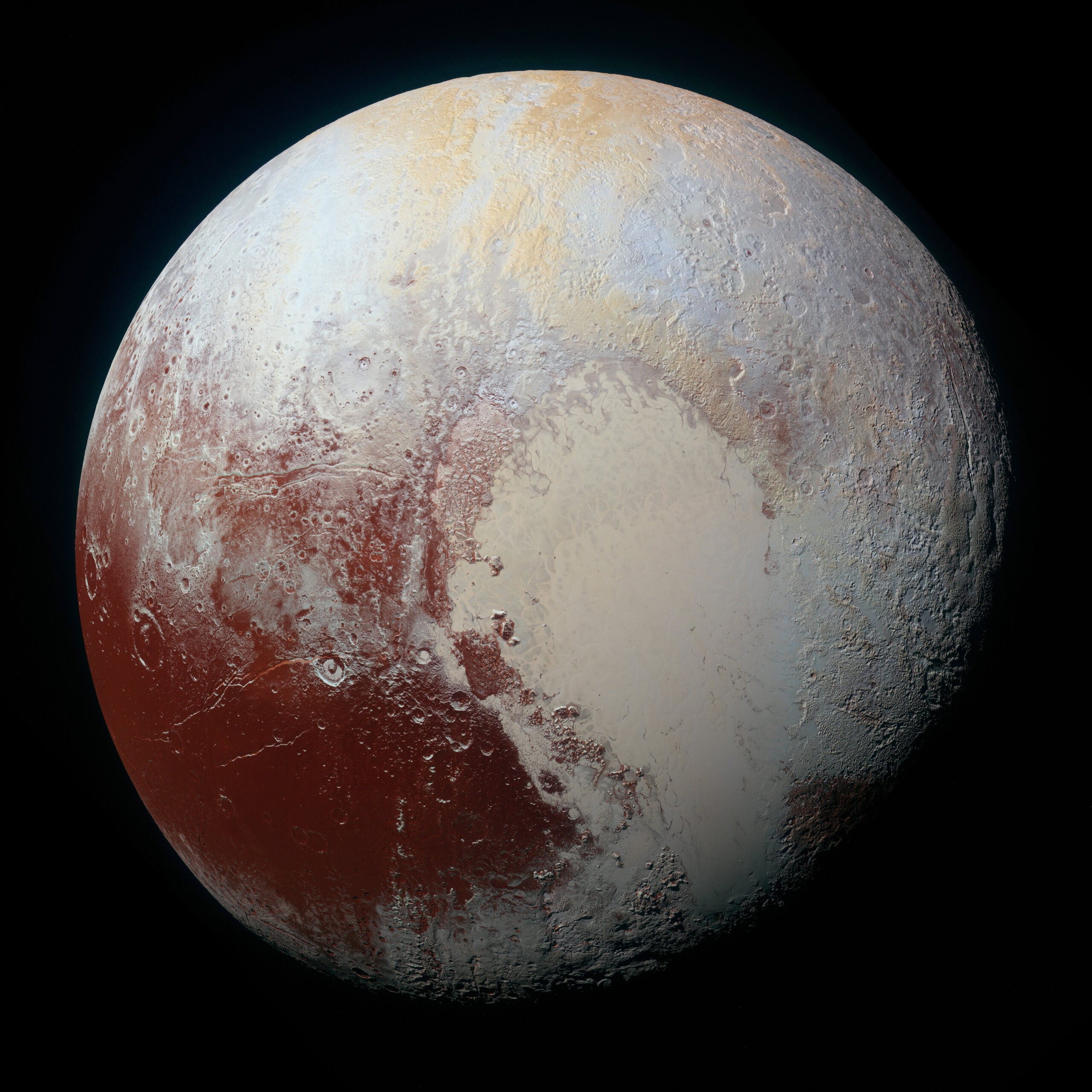
My second pick is this New Horizons image of Pluto. (Admittedly, this is a slightly enhanced-color version, just so you’re aware!) Before the spacecraft flew past Pluto in 2015, we knew next to nothing about this distant world. Sure, we knew its size, its mass, and had some horrible, tiny, pixelated images of its surface from the Hubble Space Telescope. But that was really about it. (We didn’t even know how many moons it had until Hubble found more while New Horizons was en route!) The closeup images New Horizons took during its brief flyby have completely revolutionized our thinking about Pluto, turning it from a distant, dead piece of rock into a vibrant, dynamic world that might even harbor a liquid ocean underneath an icy crust, even raising the possibility (however remote) that it could host life. This picture and all the data it represents changed so much about the way we think about Pluto and other Kuiper Belt objects that I can’t understate its importance when it comes to our understanding of the solar system.
3. The 1919 total solar eclipse
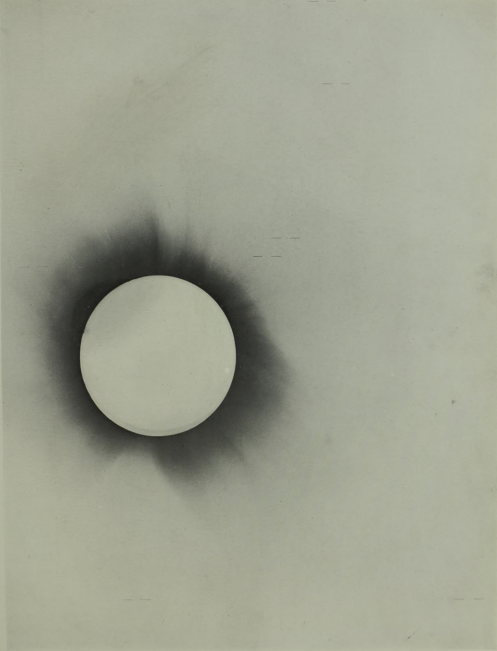
Up third is what seems like an innocuous image of a total solar eclipse, and perhaps nowhere near as stunning as the ones we’ve recently seen of the 2024 event! But this is a picture of the total solar eclipse of May 29, 1919, which appeared in a November 1919 paper by Frank Dyson, Arthur Eddington, and Charles Davidson. And it was this image that provided solid proof of Albert Einstein’s theory of general relativity. How? According to general relativity, mass deforms the fabric of space-time, like a bowling ball sitting on a mattress. But how do you measure this? Einstein had predicted that the warping of space-time by the Sun’s mass would cause the light from background stars located near the solar limb (from our point of view) to travel in curved paths, causing those stars to appear slightly offset from where they should be. But how do you see stars when they’re right next to the Sun, whose light washes them out? You observe during a total solar eclipse, when the Sun’s disk is blocked! Eddington’s team did just that during the 1919 eclipse. They were able to measure the positions of background stars in the Hyades open cluster — which were just a little off from traditional expectations, exactly by the amount predicted by relativity!
4. Pillars of Creation
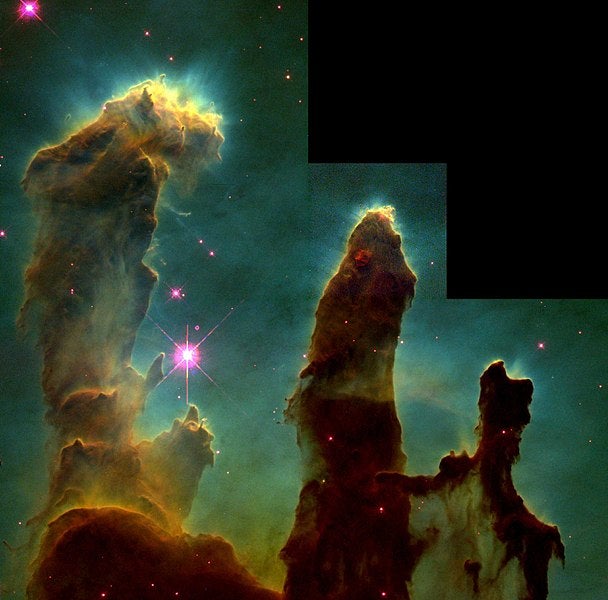
My final pick is the original 1995 image taken by the Hubble Space Telescope of the portion of the Eagle Nebula now known as the Pillars of Creation. Seen as viewed by Hubble’s now-retired WFPC2 camera (with its characteristic “stepped” cutout in the corner, where its fourth CCD had a different resolution than its fellow three chips), to me this picture has become one of the most iconic astronomical images in the public eye. Hubble itself and the stunning photos it takes have utterly revolutionized the way the general public thinks about space and the science of astronomy. It has brought space down to Earth for everyone to enjoy, not just those who are professional astronomers. To me, the original Pillars of Creation image is perhaps the most representative of the way Hubble allows astronomers to share space — and the importance of studying it — with the public. And, as an added bonus, WFPC2 itself has been brought down to Earth after replacement — you can visit it in the Smithsonian National Air and Space Museum in Washington, D.C.
Daniela Mata, Associate Editor:
1. “Earthrise” by William Anders
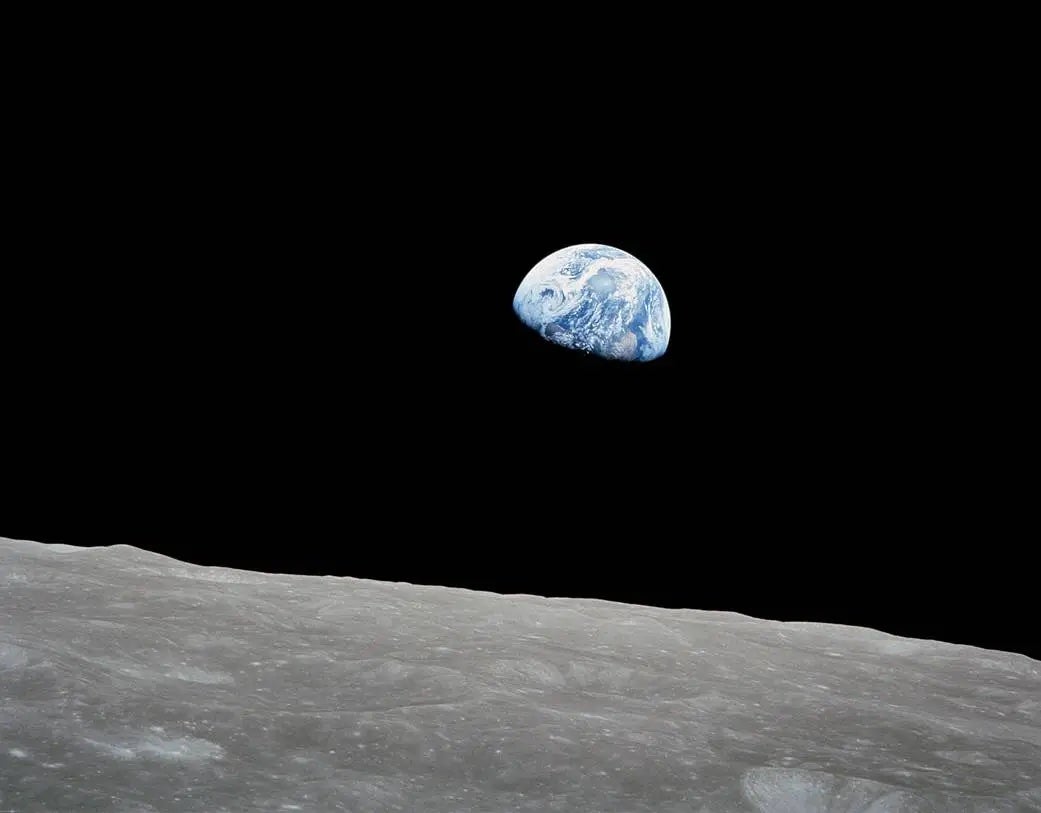
William Anders, an astronaut aboard the Apollo 8 spacecraft, simply looked out the window on Dec. 24, 1968, and noticed Earth rising over the Moon’s horizon. On a whim, he detoured from the crew’s strict schedule to take this photo — unknowingly taking the first truly iconic image that made nearly every human being re-examine their perspective on and of the world. This photo is easily one of my favorite images because it created ripples and called for changes throughout social, cultural, and political spheres across the globe. In today’s unsteady climate, we desperately need to be reminded how precious and vulnerable Earth and every single living soul it contains are. Getting selfish and greedy people to care for others and Earth is a waste of an opportunity to do better. It’s our job as human beings to protect each other and sustain vital ecosystems necessary for the balance of life. Things won’t change unless we affect the wallets that get heavier as the world falls apart.
2. Hoag’s Object
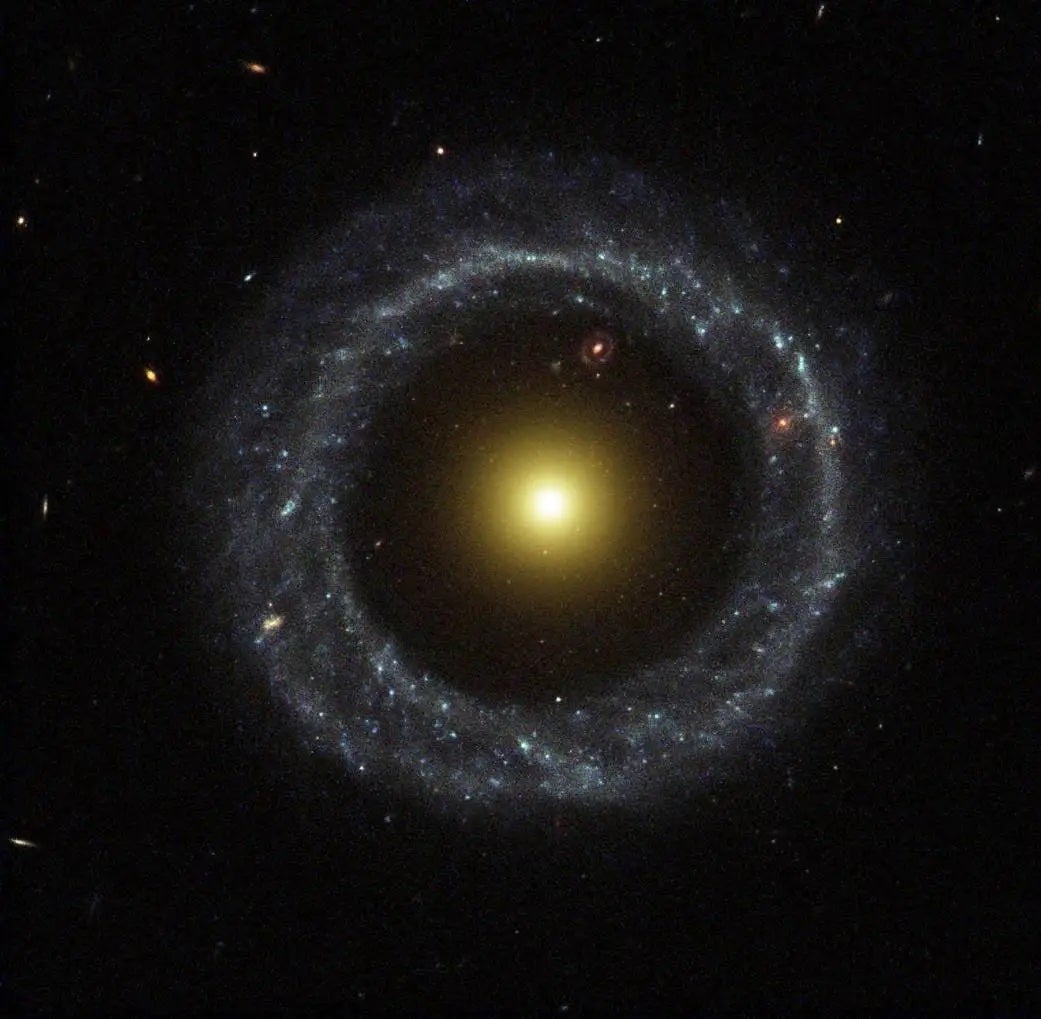
I love strange things, so it was easy to choose my second favorite image: Hoag’s Object, a ring galaxy. Art Hoag first discovered the object in 1950 but hesitantly called it a planetary nebula because of its peculiar shape. Hoag’s Object is a nearly perfect circular ring composed of blue, hot, young stars with a spokelike pattern (an indicator of rotation), and a yellow nucleus with older stars. Since this galaxy’s discovery, astronomers have been unable to extrapolate how it was created without any direct evidence of a merger. Other than the fact that its formation and evolution is a complete mystery, Hoag’s Object also contains a hidden feature hiding in plain sight — which is what grants this image such a high personal rank. In between the ring and the nucleus is a circular gap, and within that, you’ll find another (background) ring galaxy‼ What a statistical oddity! Ring galaxies are quite rare, estimated to only number a few tens of thousands in total. The chances of a perfect alignment like that are astronomically slim! The universe never fails to impress me.
3. The Cosmic Bat Nebula (LDN 43)
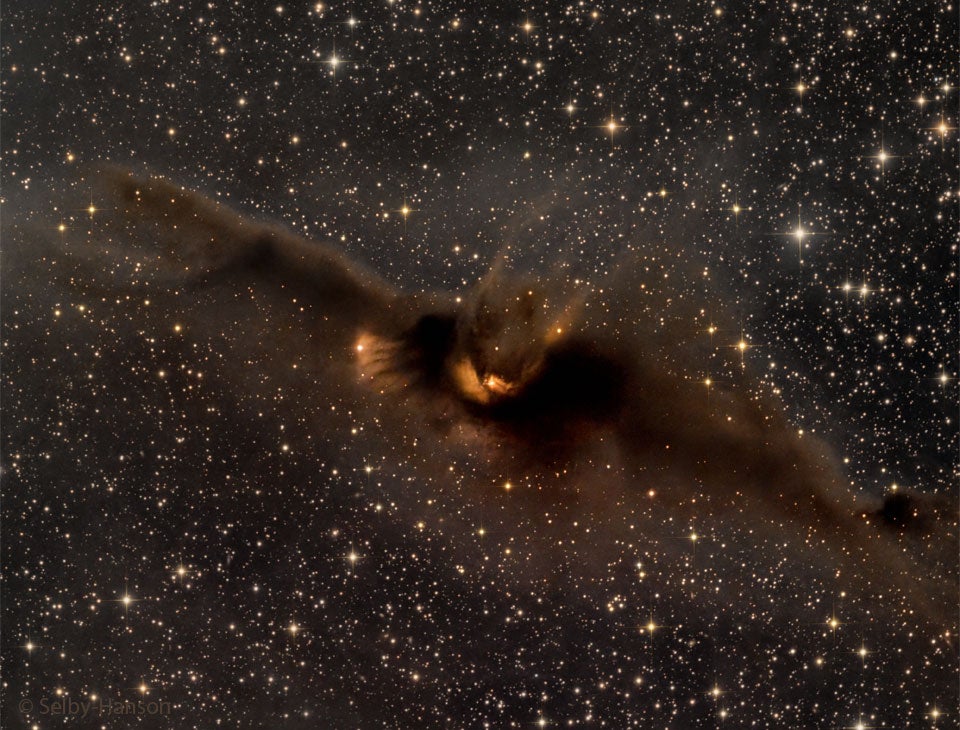
Have you ever looked up at the clouds as a kid (or even an adult) and imagined their shape as some type of animal or object? Well, you can do the exact same thing with the cosmos. My third pick is the dark nebula LDN 43, also known as The Cosmic Bat Nebula, in the constellation Ophiuchus. The contrast between the head and neck and its cute, scrunched-up face can be seen thanks to the embedded reflection nebula RNO 90, where the illumination comes from a star-forming region with young stellar objects. Normally, young stars are hot and blue, but the dense clouds of interstellar dust interfere with the light, causing it to appear dimmer and redder (called extinction and interstellar reddening). Through this, it gives the Cosmic Bat Nebula an overall Halloween-esque aesthetic. My second favorite time of the year is the spooky season, so why wouldn’t one of my top nebulae be on the spooky side?
4. Hickson Compact Group 40
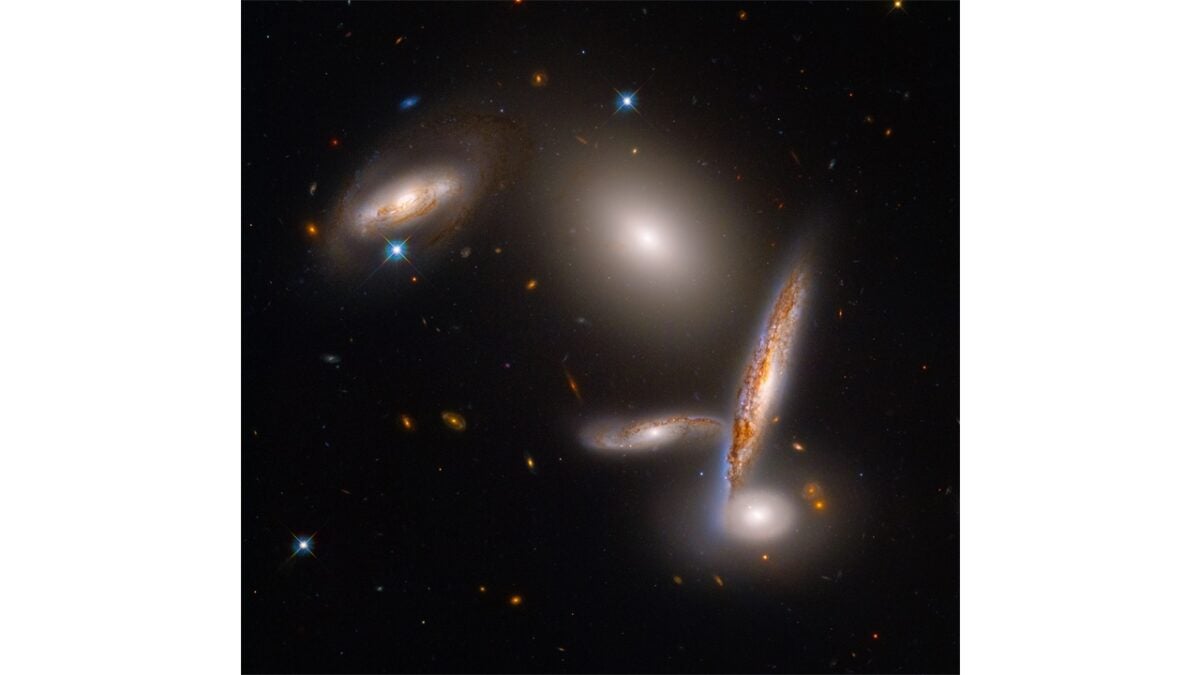
There were many galaxy groups competing to be one of my top four astronomy images, and the one that rose on top is the Hickson Compact Group 40 (HCG 40), a quintet of galaxies. This group contains three spiral galaxies, an elliptical galaxy, and the fifth (bottom galaxy in photo) shows both elliptical and spiral characteristics. HCG 40 is so compact that it spans less than 200,000 light-years, or less than twice the diameter of the Milky Way. And what makes this group the winner is that this Hubble Space Telescope image is capturing it right before the great merging event — that moment just before the kiss — where each galaxy is almost perfectly intact despite being so close together. Though, there are some clues of interaction, such as the blue around the spiral galaxy that looks photoshopped in (the second feature that made me choose this group). HCG 40’s members most likely formed independently with their own dark matter halos. As time passed, the galaxies drew closer together, pushing the dark matter out and into an envelope surrounding all the galaxies. Eventually, the galaxies will merge into a single elliptical, but that’ll be in about one billion years.
Mark Zastrow, Senior Editor, Astronomy: They say beauty is in the eye of the beholder, and my eyes have always been drawn to landscapes of alien worlds.
1. Apollo 15 at Hadley Rille
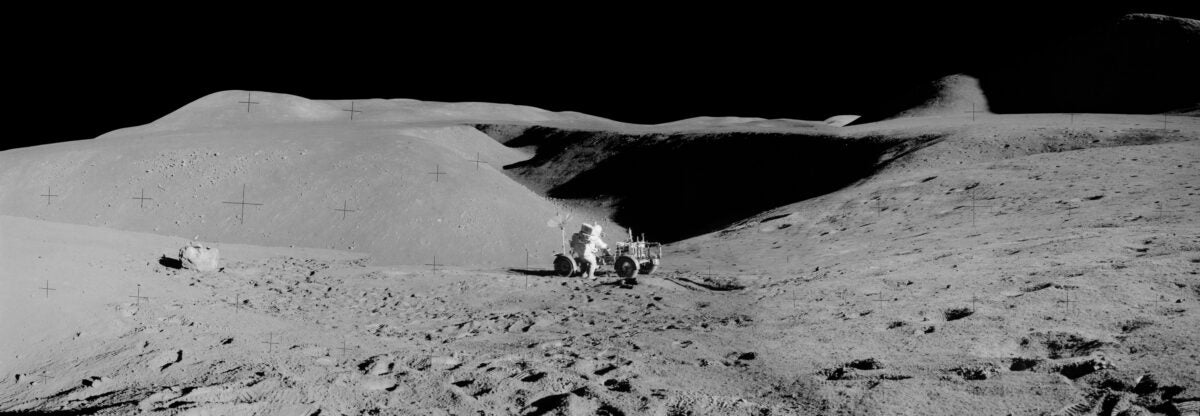
Arguably the most dramatic alien landscape ever explored by humans is that of Apollo 15, which landed on a small plain hemmed in by mountains and valleys. So my first pick is a panorama of Hadley Rille — an ancient lava channel — taken during Apollo 15 on the astronauts’ first lunar traverse. They had driven the rover up the lower slopes of Mount Hadley Delta to take samples of a boulder (at left) flung from a nearby impact crater. When they looked back, they realized they had a sublime view into the rille below. At the center of this panorama, working at the rover, is the mission’s commander, David Scott. At right, several miles distant, lies the sunlit peak of Mount Hadley, which looms above its surroundings higher than Everest’s peak from base camp.
It’s an epic scene, perfectly framed in this panorama, which consists of half a dozen frames taken by Lunar Module Pilot Jim Irwin. There is no shortage of iconic images from the Apollo missions, but I think many of the panoramas — when stitched and processed with care — are some of the most spectacular and underappreciated.
2. A sunset on Mars
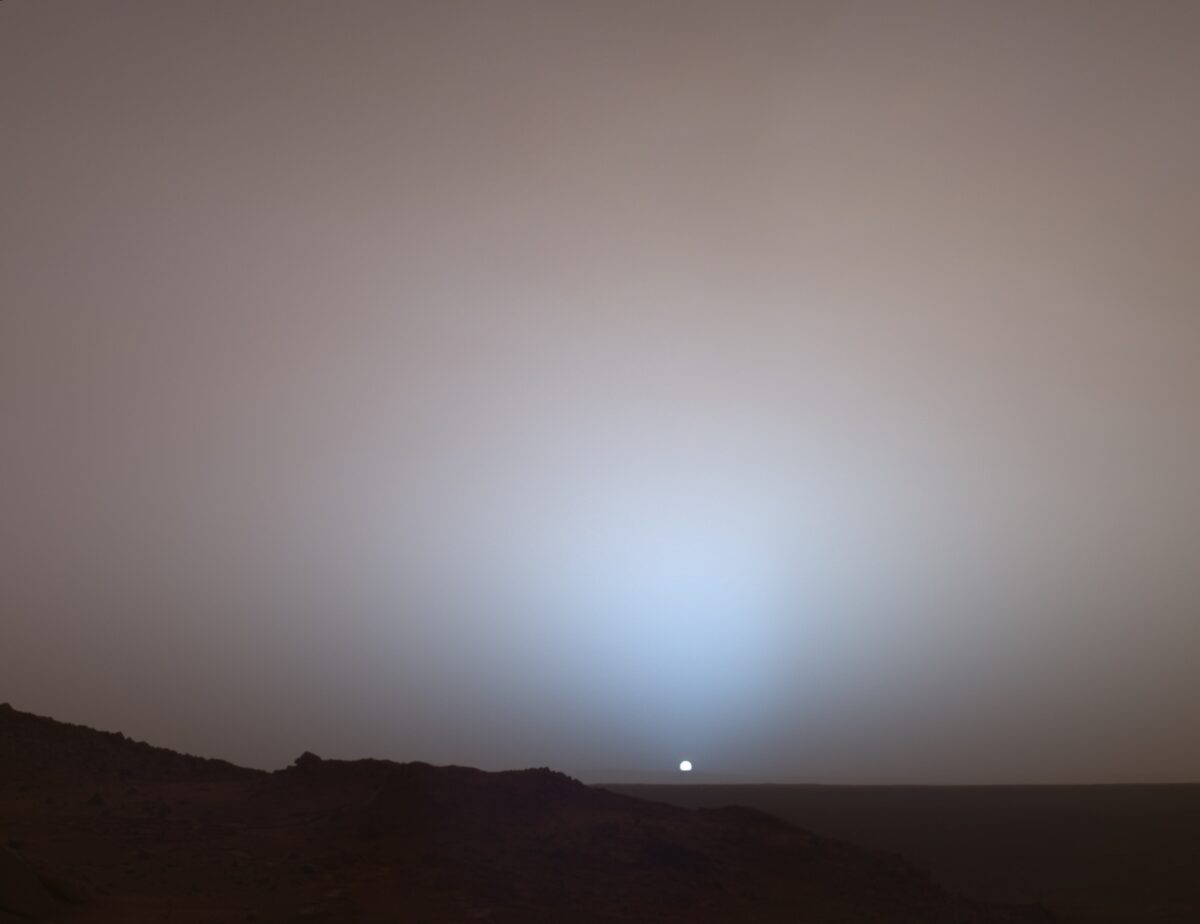
My second pick is one that took my breath away the first time I saw it — the Sun sinking behind a rocky outcrop on Mars. This image was captured by the Spirit rover on May 19, 2005, at the rim of Gusev Crater, but it may as well have been a long time ago in a galaxy far, far away.
3. Oppy spies a dust devil
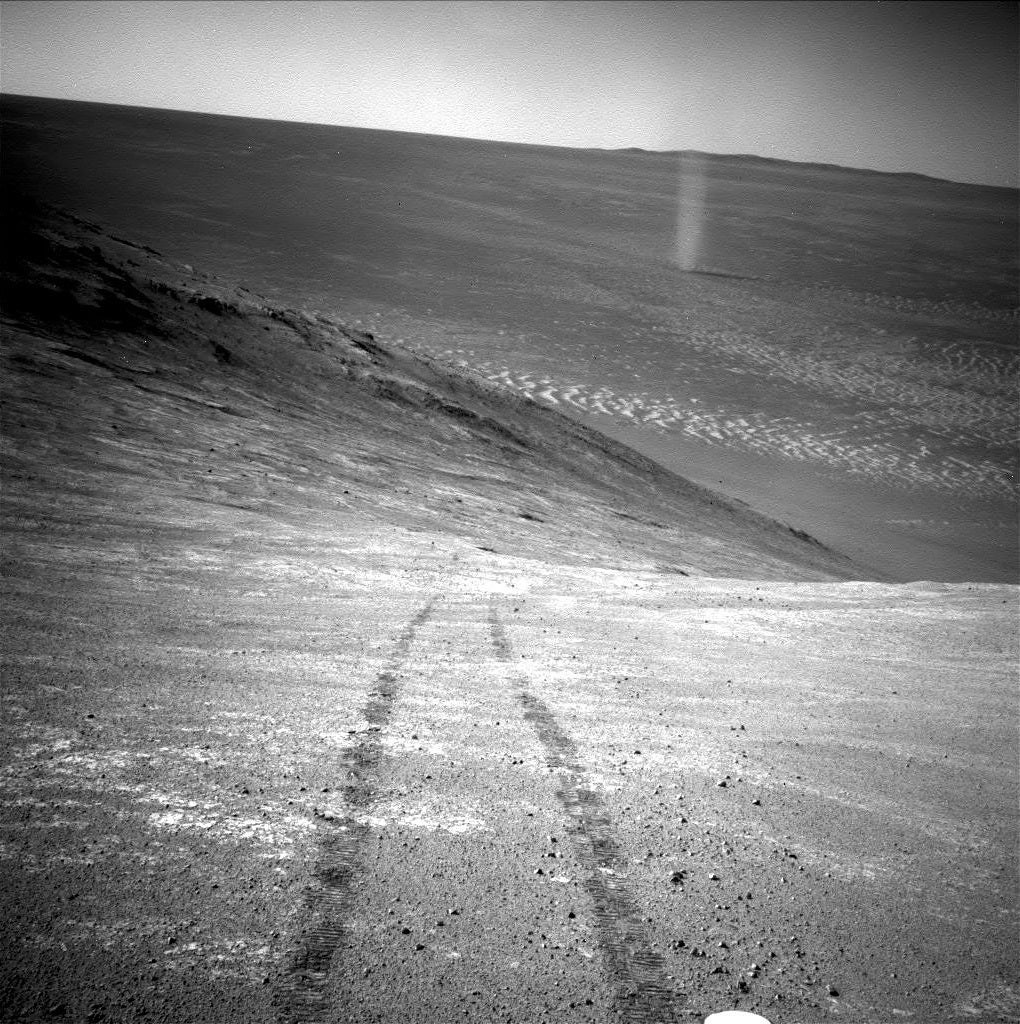
My third selection is another scene from Mars, taken by Spirit’s twin, Opportunity, from atop a feature called Knudsen Ridge. The longer focal length and the rover‘s own tracks give it a more intimate feel, as if the rover had paused, turned around to admire its progress, and caught a glimpse of the dust devil whirling in the distance.
4. Apollo 17’s Blue Marble
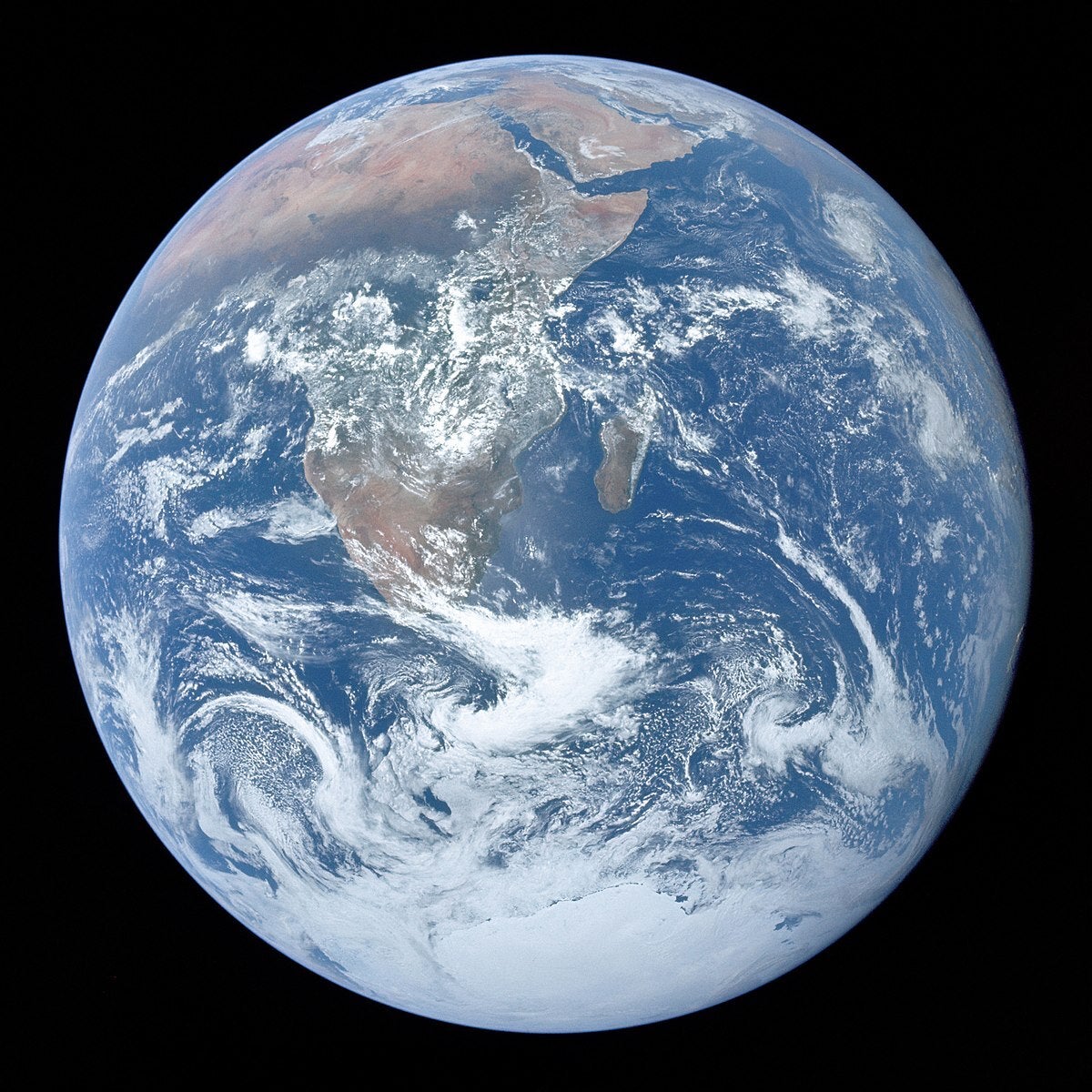
My last pick is the “Blue Marble” from Apollo 17 — one of the most famous of all Apollo images, and a fitting bookend to Bill Anders’ “Earthrise” from Apollo 8. Unlike that image, the “Blue Marble” presents a face entirely lit by the Sun. It was not the first image to show the entire Earth like this — the organizer and writer Stewart Brand famously put a mosaic produced by the NASA ATS-3 satellite on the cover of the Whole Earth Catalog in 1967. But as a single frame capturing the full disk of only world we’ve ever inhabited, it is perhaps the closest thing to the platonic ideal of the image that Brand saw in his mind’s eye in 1966 when he first started campaigning for NASA to release such an image, hoping to spark a new awareness of our environment and how connected we are to each other.









